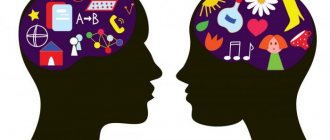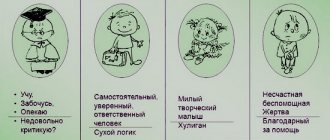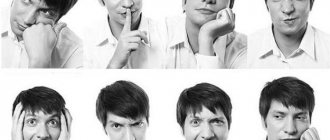Every person in his life every day performs a number of different actions. But do you know what actions are? This question seems quite simple, but if you think about it, few people know the definition of the concept “action”. It is everyday, in one day you may well mention it several times and hear it even more times, but you will never think about what exactly was meant. That is why you should carefully study this article. From it you will learn not only what actions are, but also what types and characteristics they have, which include a number of components. Naturally, in real life this information will not be too useful for you. After all, everyone knows that actions are actions that a person performs. However, to expand your horizons, you should still get into this topic.
What is an action?
So, first of all, you need to understand what actions are. It would seem that the question is very simple and banal; many people will laugh when they hear it. But if they think for a minute, they will realize that they cannot give an exact answer. Yes, actions are human actions, but in this case, how do actions differ from actions? The answer, by the way, is quite simple. After all, an act is a conscious and only conscious action that a person performs of his own free will. Thus, the act is the embodiment of the realization of an act of free will. Actions are very closely related to a person’s character. After all, they are a reflection of a person’s character traits in the real world. Very often, psychologists define them as a person’s assertion of himself as a specific individual. As you can see, actions are a very important thing about which it is worth knowing more details. For example, what types of actions are there, what characteristics they have, and so on.
Samples
Only a morally developed person can carry out moral actions. Examples of these can often be found in literary works or films, which carry a certain charge of wisdom to the reader and viewer. In any novel or story there are heroes whose behavior can be rewarded for courage, dedication, and ethics. This is how we learn about the sublime purpose of the individual.
All this happens against the backdrop of a certain era, its way of life and ideas about correct and sinful behavior. In order to make the reader think, the authors create situations in which the characters on the pages of the books commit moral actions. Examples of them abound in the novel War and Peace, written by Tolstoy.
We can talk about a whole chain of difficult moral problems that are resolved in the course of the story. Even looking at the life of one of the main characters, A. Bolkonsky, one can notice moments of perfect peace, which are replaced by military difficulties. He selflessly sacrifices his own life for the sake of his native land, which deserves all praise and approval.
Types of actions
A person's actions cannot be attributed to one level, because they are very different. There are several types of behavior that you should pay attention to in order to understand this issue.
The very first type is a reflex. Many people may think that a reflex does not apply to an action because it is not conscious, but they would be wrong. Indeed, a reflex is not a conscious action, it is an unconscious reaction to an external stimulus, but the message to action comes from within. That is, if the sun is shining in your face, you reflexively raise your hand to close your eyes, and if any object flies at you, you reflexively step aside. This is a basic level of behavior that describes only basic instincts. But reflexes are still actions, since at the most banal level they describe certain aspects of a person’s character. If we take the example of the same flying object, different people may have different reflexes: someone will try to catch the object, someone will try to dodge it, someone will kick it, and so on.
The next type of action is instinct. This is an emotional and purposeful action, which is distinguished by the fact that a person performs it consciously, but at the same time is not aware of the results that he will receive as a result. A person eats because instinct tells him to do so - he does not need to remind himself every time that he needs to have lunch so as not to die of hunger.
The most common type of action is conscious action. In this case, a person not only consciously commits a certain act, he also knows what the consequences of this action will be, and also strives to obtain a specific result. It is precisely such actions that reveal to a greater extent the character of the person committing them.
As you can see, a person’s actions can be divided into several different types, which will characterize this or that person in their own way. What else can you tell about actions? For example, you can look at what characteristics they have, that is, what components can be identified in their actions.
Motive
The first feature of actions is a motive, that is, something that motivates a person to perform a particular action. Every committed action has its own motive. Even reflexes have it, although it is subconscious. Unmotivated actions are a deviation from the norm, and if a person commits them, then he needs the help of a psychologist or even a psychiatrist. However, motive is far from the only component that every perfect action has.
The purpose of an action is what a person wants to get by performing this or that action. At first glance, the concepts of motive and purpose may seem similar, but in reality they are very different from each other. A motive is what is the initial reason for performing an action, while a goal is the final result towards which the person performing the action moves. It is goals that can determine whether actions are good or bad. For example, this can be done by looking at whether the interests of the person performing the action coincide with the interests of the people around him. If interests coincide, then the action may be good, but if this does not happen, then the action will definitely be bad and selfish. Naturally, there is no categoricalness here, so interests often partially coincide. Accordingly, there are not only good and bad deeds, but in any case every person knows this.
Forms
What are they? The action can be presented in the following forms :
- activity or inactivity;
- expression of verbal attitude, point of view, position;
- physical expression of attitude through facial expressions and gestures;
- a set of actions aimed at overcoming emerging difficulties in achieving a goal.
These steps always have a component of meaning. This distinguishes them from reflexive impulses, automatic patterns of behavior.
The latter include conditional “politeness” in behavior , which is often attributed to residents of Europe and America: their behavior is not aimed at giving pleasure to the interlocutor or expressing approval, but is an automated “form” of communication accepted in society.
Thus, the purpose and direction of behavior constitute a significant part of the definition of an action.
The action is also characterized by responsibility . That is, the individual is aware of and accepts the possible consequences. Understanding these processes and vice versa characterizes the personality from the side of consciousness.
They are characterized by feasibility and realism. This means, at least potentially, the possibility of their implementation.
Facilities
An action is never done just like that; to accomplish it, a person needs certain means. And if you don’t see these funds, it doesn’t mean they don’t exist. The means can be very varied, verbal or practical. Examples of actions that use practical means are numerous. This could be going to the store, playing football, or cleaning the apartment. An act that uses verbal means is a little more complex. It does not include action as such and is based only on speech. However, this does not mean that any statement cannot be an action: a motivational speech or a call to save stray animals is already an action that characterizes a person from one side or another.
Good purpose
Under different conditions, the same action can be both praiseworthy and immoral. So you need to be flexible and be able to grasp the demands of the world around you, while at the same time not losing your own head on your shoulders. A moral act denies self-interest and profit, although there is nothing wrong with achieving one's desires in a righteous way.
The most important thing is that you do not harm others. Only the result that will not cause harm to other people should be achieved. There is a fine line between improvement, reaching new heights and selfish behavior, excessive individualism. You need to feel it and try not to cross it.
Process
There is no point in talking a lot about the process, that is, directly performing the act itself, but it cannot be ignored. Moreover, the process of committing an act can vary greatly. For example, the actions of children usually have a fairly simple and uncomplicated process, but with age it gradually becomes more complex, including preliminary thinking, planning, options for the development of events, and so on. However, as in all cases, it all comes down to taking the action and getting the result.
Result
Since we are talking about the result of an action, we need to dwell on this concept and analyze it in a little more detail. As with ordinary action, in most cases, after completing the process of action, a certain result will be visible. However, actions and deeds differ from each other in that the action includes consciousness. Accordingly, as already mentioned in the paragraph describing the subject of transformation, the result is not only what happened as a result of completing the process of the act, but also personal changes in the person performing it, in another person, as well as interpersonal changes. Simply put, taking an action only gives the actual result. While committing an act also carries with it moral consequences.
Grade
Well, the last point that is worth talking about is the assessment of the action. This is the highest level of human consciousness when performing an action. As mentioned earlier, an action can be reflexive, instinctive and, finally, conscious. The latter includes the understanding that there will be some result in the end, as well as movement towards a certain goal. But there is an even higher level - the assessment of the action, that is, the analysis of what happened, what factors were involved, what consequences emerged, and how it affected people and the environment as a whole. However, in order to fully evaluate an action, you need to know all its components, starting with the motive and ending with the final result. Only then will you be able to evaluate the action objectively and draw appropriate conclusions regarding it.
Well, now you know what an act is, how it differs from an ordinary action, what its types are, what its features and components are, how good actions differ from bad ones, and so on. This information is not vital, you can easily exist without it, but still it may turn out to be useful, informative and more than interesting for you.
Source
Look inside yourself
The system of values and aspirations of an individual should always remain harmonious and not interfere with the development of either the person or the world around him. You need to cultivate pure convictions, strive for good goals, not go over your head, but achieve everything through legal means, strive for self-development and show will.
Every person wants to express themselves, but this must be done in constructive ways that do not destroy anything in the process. You are free to do as you please. Since every person, deep down in his soul, wants everyone to be happy and live in peace, you should listen to your deepest impulses, and you will find the right path.
Take a closer look at your surroundings, but always make the choice yourself, after carefully weighing everything. Somewhere in the middle lies the desired balance, the golden mean, which, if found, will help you find peace, happiness and psychological health.
Personality and actions. When and what to share?
There is an option when it is reasonable and correct to truly separate the actions of a person and the person himself. This is a process of education.
The child should not hear that he is “crooked” because he broke the cup. “Crooked” is an ascribed personal characteristic, and a broken cup is the result of an action. If children are instilled with negative personal characteristics, they quickly begin to believe it and break cups with pleasure.
With adults, things are not so simple. The actions of an adult are a reflection of his beliefs, beliefs, and manifestations of personal characteristics.
If a worker steals bricks from a construction site, he is probably convinced that it is the right thing to do. Perhaps he believes that for such a salary it is simply necessary to not only work, but also steal.
The official believes that he was given power to monetize his powers of power. There is no need to tell what actions he performs, and that’s how everyone sees him.
One official bought a pen for 36 million rubles, and the police took bags of money and jewelry from his apartment with a dump truck. An official in prison. And we can hardly say that as a person, the embezzler and bribe-taker was an honest, incorruptible and decent person, and his actions had nothing to do with his personality, they simply formed several elements of a crime.
Faith, beliefs, abilities, and certain characteristics make up a person’s personality, which is inextricably linked with actions. It happens, of course, that a person will do something that doesn’t fit in with his personality.
A young lady I know, who doesn’t drink at all, managed to get drunk to the point of insanity, fell into the pool, the Turks saved her, they are experienced in this matter.
Doesn't happen to anyone. But this is an isolated incident, a mistake that will not be repeated. In this case, it is also appropriate to separate the behavior of the person himself.
It’s another matter when the same actions are repeated constantly. An alcoholic who promises to quit ends up drunk every day. An alcoholic is a personal characteristic and at the same time a disease with which a certain behavior is associated. In this case, it is impossible to separate a person from his actions. By the way, admitting oneself to be an alcoholic is the first step in treatment.
In criminal cases, the person himself is judged, not his actions. Prove the guilt of the defendant. Guilt in criminal law is a person’s mental attitude towards a socially dangerous action or inaction and its consequences, expressed in the form of intent or negligence.
I want to be a humanist, love every bright person and condemn the vile actions of this person. But real life tells us: if a person constantly acts like a beast, then most likely he is a beast, such is his personal identity.
Although the pig Funtik from the children's cartoon suggested forgiving bad people, because they can have good children.
Tags: culture of behavior, action, psychology of communication, morality
Grade
Well, the last point that is worth talking about is the assessment of the action. This is the highest level of human consciousness when performing an action. As mentioned earlier, an action can be reflexive, instinctive and, finally, conscious. The latter includes the understanding that there will be some result in the end, as well as movement towards a certain goal. But there is an even higher level - the assessment of the action, that is, the analysis of what happened, what factors were involved, what consequences emerged, and how it affected people and the environment as a whole. However, in order to fully evaluate an action, you need to know all its components, starting with the motive and ending with the final result. Only then will you be able to evaluate the action objectively and draw appropriate conclusions regarding it.
Well, now you know what an act is, how it differs from an ordinary action, what its types are, what its features and components are, how good actions differ from bad ones, and so on. This information is not vital, you can easily exist without it, but still it may turn out to be useful, informative and more than interesting for you.
is a way of personal existence in the world. Everything that exists in man and in the humanized world is an action and its result. In this nodal cell of existence there is an active creative interaction between man and the world. An act shapes and manifests the essential strengths of the individual, as well as the “big world” itself. As the only possible key, it reveals the secret of the world in the form of practical, technical, scientific, artistic, socio-political, etc. development. That is why action is usually considered as a general principle of philosophy, with the help of which human nature, the nature of the world, can be interpreted in a practical and cognitive sense.
Communication of action implies the separation of human personality from the world. Moreover, a person includes not only narrow subjectivity, for example some particular passion, but also all his knowledge and ideas about the world. All the wealth of the world that has passed through human perception, thinking, and consciousness constitutes the personal world. It cannot be reduced to the concept of a biological being having a certain set of drives. The personal world is not limited to the physical, bodily organization. Personality includes its relationship to objects, phenomena and events, connections with the world, living and nonliving, indirectly through social life. The personal world is a mastered world. The fact that behind the open personal world exists in itself, which includes the first, shows the need for existential and cognitive communication of these two worlds - in the old philosophical terminology of microcosm and macrocosm. We are talking not only about the fact that the personal world is only part of the big world, but mainly about the fact that this part seeks to expand its essence by mastering this big world. The insufficiency of the personal world and its antagonism to the objective is expressed in addiction, attraction, and creative restlessness. The active connection of these worlds is the creativity of one and the other, which can be represented in the form of a ball as a symbol of the structural and meaningful infinity of the objective world, and the personal one - in the form of a “screen” section of this ball. Such a section is not static, but rotates on the axis of the ball, revealing (or “pulling out”) its content and at the same time creating it. The structural network of the “screen” includes both the structure of the world and human nature. The double structure of the “screen” is a contradiction that causes it to rotate around the axis of the ball. Passing through the ball, the “screen” changes all the time, revealing more and more new contents of the world. The contradiction expressing the relationship between the personal and the universal world is global and expressive. It contains the main problems of philosophy, as well as psychology: the relationship between matter and consciousness, infinite and finite, abstract and concrete, body and soul, essence and appearance, form and necessity, freedom and content, etc. This is a contradiction at its core act.
- the way the “screen” moves, the endless rotation of its plane, the mediation of personality and the material world. There are no three separate entities that interact externally, mechanically with each other: personality, action and the big world. An act is the result of a mutual transition between the personality and the microcosm, and this transition manifests itself as a creative act. That is why the act is universal, a synthetic creative action in relation to its special types. Having received freedom in what has been mastered, a person immediately discovers his lack of freedom, because behind the horizon there is always an unknown, alarming and alluring “country”. In action, in choosing from alternatives, a person forms an attitude towards the unmastered “external” world, as if identified with it. The mistake of philosophy points to the otherworldliness of the “external” world, which lies in its separation from the personal plane of existence. As a result, the world, as it exists in itself, turns out to be an empty abstraction, and the personal world turns out to be a dead, frozen phenomenon. In reality, these are two sides of actions.
Existentialist ideas of “fear” are in fact phenomenological moments in which the opposition of personality and the material world is fixed. Understanding the actions of an act as a search and finding support in the material-objective world (the construction of pyramids, the revival of inanimate nature, progressive forms of social communication, etc.) is associated with the idea of fear based on a creative attitude to the world. As an expression of the contradiction between the inner world of the individual and the material world, the act shows incompleteness, the desire for improvement, overcoming the discrepancy between the ideal and reality in cognitive, aesthetic and moral activity in order to find support in the material world. This is the reason for the existence of “blank spots” in our knowledge that need to be filled. These “spots” are not something like islands of the unknown. This is the contradiction of what is already known and what is in the act of cognition.
Sometimes you hear the following phrase: “Yes, this is already an action!” It is usually pronounced with respect. But you can also hear this: “What can we expect from him? He is incapable of action!” Here there will certainly be mockery, even contempt to some extent, in the speaker’s voice. So what are “actions”? Let's look at this issue.
Action and its role in personality development. Human character and life circumstances.
A number of psychologists understand by action
an action that expresses a person’s attitude towards other people, the task at hand, existing social norms, values and therefore, as a rule, subject to public assessment. So, S.L. Rubinstein calls an action an action in which a person’s position, a conscious attitude towards other people, towards the norms of public morality is expressed. Aseev V.G. indicates that an act is always an action evaluated in a broad social context, an action that has a certain social meaning. Petrovsky A.V. O.
Thus, psychologists are currently introducing the concept of “ action
" to indicate:
– conscious actions in which a person expresses his attitude towards other people and the world as a whole and having social significance;
– moral actions, i.e. actions aimed at the creative embodiment of existing values in individual activities, achieving moral ideals, observing moral imperatives, etc.;
– activities in which a person expresses his moral attitude towards the world;
– special personal activity of a person, not reducible to the implementation of individual actions or activities.
It is necessary to distinguish between the concepts of “activity”, “behavior” and “action”. Deed
- this is an action (an element of activity) with a clear social meaning.
An act
is a conscious action of a person who understands its social meaning and is performed in accordance with the accepted intention;
Personality begins with action. A person’s choice of action is, as a rule, conscious. This choice is focused on achieving a personally significant result, which determines the direction of the action. Thus, personality expresses itself in action, and action expresses personality.
Expression (self-expression) is associated with the structure of the action. The structure of an act concentrates the components of individual moral consciousness, which is realized in the behavior of the individual. It is possible that the mechanism of transition from internal to external is carried out with the help of a semantic attitude, which is formed on the basis of personal meaning. In this case, the semantic attitude ensures the stability of the act and behavior as a whole and serves as a connecting link between the internal content side of the act and its external formal manifestation.
The action underlies the assessment of the individual by others. A moral assessment of an action is possible and necessary only when the actor has freedom to choose both the goal and the means of achieving it. Without analyzing the structure, it is impossible to give a moral assessment of this or that action. Analysis of the student’s actions is of paramount importance for the teacher, because it determines the nature of the assessment of the individual as a whole and the choice of methods for his upbringing. What is an action?
The most general definition of an act convinces us that an act is a personally significant act, controlled by a system of norms accepted in society. According to established ethical ideas, an act is a kind of “cell” of moral behavior. Every action is a holistic phenomenon in which subjective-personal (motives) and objectively significant (results) elements coexist. An action with equal justification can be understood as a subjectively motivated result and as an objectively realized motive. An act is performed out of good will, out of internal motivation: its motive is duty, conscience and other strictly moral norms of motivation. The result of an action is always moral. An act devoid of moral result is called an offense.
Misdeeds go beyond the requirements of normative morality that underlie behavior.
The action has a certain orientation towards other people. A single act verifies a line of behavior and contributes to the individual’s choice of decision - to accept it or reject it. In an act, individual (individual), special (group, collective) and general (social) moral experience interpenetrate each other. “Therefore, moral actions express a variety of social relationships: individuals and individuals, individuals and groups, individuals and collectives, individuals and society.
It is noteworthy that an act can manifest itself not only in action, but also in evasion from it. But that's not the point. An action reflects a subjective value attitude, without which it simply does not exist. Moreover, the act lies both in the sphere of objective and in the sphere of subjective. The value of an action is determined by a morally valuable motive embodied in a personally and socially significant result; moreover, the moral value of an action lies in the harmony of motive and result. It is equally important that the value of an action is determined through the relationship between goals and means.
Finally, let us pay attention to the relationship between action and choice. Moral choice is usually spoken of as a choice of values and as a choice of action.
Attention!
If you need help writing a paper, we recommend turning to professionals. More than 70,000 authors are ready to help you right now. Free adjustments and improvements. Find out the cost of your work.
Cost calculationGuaranteesReviews
Actualization of choice requires preference for one of the options for action. An act is the core of moral choice, in which internal incentives merge with the process of realizing moral values. The conclusion about the isomorphism (correspondence) of the structure of moral choice to the structure of action is also very significant. In other words, by identifying and analyzing the structure of an act, we identify and analyze the structure of choice, and vice versa.
Character
is a set of stable individual properties of a person that determine his typical modes of behavior and activity.
The main condition for the formation and development of character
is the social environment. Of course, physiological conditions cannot be discounted. After all, the peculiarities of the functioning of the brain (processes of excitation, inhibition, the degree of mobility of nervous processes) largely determine the differences in mental reactions to the same influences.
Every person from the first days of his life is included in the system of objective attitudes of the people around him to reality. He turns out to be included in the system of relations of these people to each other and to himself. Gradually, all these relationships become his own relationships - to nature, social institutions, work, public and personal property, to other people, to himself.
Personal attitudes towards various aspects of reality, which become typical for a person and are manifested in the modes of behavior that have become habitual for him, constitute the character of this person. In other words, relatively stable and typical personal relationships to reality, manifested in the usual ways of behavior for a person, which are usually attributed to the sphere of character, are always in the closest relationships with each other and together form a more or less complex structure.
Every person, from childhood, develops a system of values in which different aspects of reality related to nature, human communities, the affairs of the person himself, etc., have unequal subjective significance for him, since they serve in different ways to satisfy his material and spiritual needs. That is why a person behaves differently when faced with different aspects of reality. For example, realizing that there is a very significant event in front of him, a person gives a strong emotional response and behaves accordingly. In another case, faced with an event that he evaluates as insignificant, a person gives a weak emotional reaction to it and again behaves accordingly. Thus, the relationship essentially represents a unity, a kind of “fusion”, of knowledge, experience and behavior.
People's attitudes to individual aspects of reality, their components and characteristics, as a rule, differ from each other not only by varying degrees of positivity or negativity, but also by varying degrees of generalization and differentiation. For example, one person can treat things that constitute public and personal property with equal thrift; for another, this quality manifests itself only in relation to personal objects. Or a person may consistently behave as a collectivist within the work team of which he is a member, but lose this quality outside of it. And his teammate shows this quality equally in the brigade and in any other community, both in official and unofficial settings.
Thus, in specific cases, a person’s attitude acts as a kind of integration of more particular, so to speak, partial relations to various objects, situations, events, states of the reality surrounding him, etc., which he combines according to some characteristics into one category. The system of such more general relationships constitutes the structure of a person’s character.
We have already discussed above that behind a person’s relationships there are always his needs, and to be more precise, a person’s needs are manifested in relationships. Therefore, it is clear that the uniqueness of the system of relationships that form character, and therefore its structure, largely depends on what needs a person has, which of them are expressed more strongly, which are weaker, how far they are separated from each other in content. Thus, if the leading human need is the need to work “not for fear, but for conscience,” then we have one system of relationships and a completely definite structure of character. On the contrary, if a person’s need to work is completely undeveloped, and among other needs the desire to parasitize and spend time idly dominates, then we have a completely different system of relationships, and the character has a structure that is different in content and form.
You should pay attention to one more character parameter that usually catches your eye when comparing the personalities of different people - strength of character. When in a person’s system of needs one or several closely related needs subjugate his thoughts and feelings for a long time, then their owner is constantly encouraged to overcome external and internal obstacles that prevent the satisfaction of the dominant need (or group of needs). This means that his character, in terms of strength, is becoming increasingly pronounced.
Numerous facts obtained in specially conducted experimental studies, as well as through observations of people’s behavior in everyday life, show that there is not always a direct correspondence between the content of character and its form. For example, several people, based on the content of the leading relationships in their characters, may turn out to be collectivists. However, the form of expression of their collectivistic character varies greatly. For some, collectivism in its form is not loud, not flashy, but is clearly expressed in behavior aimed at benefiting the country, people, comrades in a common cause, and manifests itself in caring for loved ones. For others - leaders by nature - collectivism is associated with a bright emotional manner of expression and increased activity.
In everyday life, we also encounter people’s characters where the form (behavior) can sharply disharmonize with the content. For example, a person behaves like a collectivist in front of others, but he does not experience a dominant (among others) need to be a collectivist. Those around them, without penetrating into the personality of such a person, as a rule, are not able to immediately understand that the imitation of collectivism they observe is a manifestation of another need he has, say, self-affirmation.
Many psychologists call will the spine of character. And there are reasons for this. No wonder wisdom says: sow an action and you will reap a habit, sow a habit and you will reap a character, sow a character and you will reap a destiny. Actions are the clearest manifestation of will. And if we repeat them repeatedly, trying to ensure that they meet the standards of high morality, they form volitional qualities that correspond to it, becoming character traits.
Thus, in the early stages of a person’s life, the facets of character
“hones” mainly life itself. Gradually, the initiative increasingly passes into the hands of the individual himself.
We will help you write any paper on a similar topic.
- Essay
Action and its role in personality development. Human character and life circumstances.
From 250 rub.
- Test
Action and its role in personality development. Human character and life circumstances.
From 250 rub.
- Course work
Action and its role in personality development. Human character and life circumstances.
From 700 rub.
Receive completed work or specialist advice on your educational project
Find out the cost
Just an act
In literature and everyday speech, the word “action” is often used without an adjective to characterize it. They simply say: “Yes, this is already an action!” What category does this action belong to? How to guess whether we are talking about a good and kind deed or about a nasty and ugly one?
If there is no clarification around the word “action”, then you should guess that they are talking about some significant action. Moreover, most often this is how they express their admiration for an action performed by someone.
“The boy barely got up from the asphalt. Then he picked up his bike. And, although his lips curled treacherously, he stubbornly held back his tears. And it was an action. The boy deserves to be called a “man.” Hereby!”
For a boy, such an act is a real feat. Because he managed to conquer himself, his weaknesses. Although he did nothing good for those around him. Therefore, there is no need to clarify whether this is a good deed or an evil one. It’s just an action and that’s it. A significant action, conscious, requiring intense mental and physical strength.
Motivation and purpose determine the quality of action
In search of an answer to a question, it is necessary to understand the reasons why a person acts in one way or another, the motives and goals that he pursues. And if there is no motivation, if the action is performed thoughtlessly, does this mean that such an action cannot be called an act? Although many psychologists claim that this is exactly the case, there are also various nuances here.
Here is the story by Viktor Golyavkin “In the Closet” reveals to the reader a story about a boy who just wanted to make the kids in the class laugh and for this he climbed into the closet, where he was locked. As a result, three adults had to put aside their affairs in order to solve the problems that arose in connection with this: they had to first look for the key, and then completely break down the closet door.
He acted rashly, succumbing to the desire to misbehave. The essence of the boy’s action is that he is not good, kind, useful for himself and society, but stupid, thoughtless, causing trouble both for the hero himself and for those around him.
Essay on the topic Deed
All people are different. Their thoughts and experiences are different. And actions are also very different. In my opinion, people's actions depend on their emotions. When a person is upset, offended by someone and angry, he is capable of doing any desperate act: setting someone up, betraying someone, offending someone in return.
A kind and happy person wants to give people joy. Every evil deed can be compensated by a good deed, and this is perfectly confirmed by real life.
My neighbors got themselves a cat. Their little child constantly begged for a pet and really asked to give him a gift. The boy promised that he would look after the pet and take care of it, but the parents could not stand it. One day they brought the child the desired gift.
I remember how happy that boy was! The parents did a real good thing and made their child happy. However, very little time passed, and we accidentally learned that the neighbors no longer wanted to take care of the animal.
They argued that the child is absolutely indifferent to his pet, does not play with him, and forgets to feed him. But the parents agreed to take him only if the boy took care of all matters of custody!
And they did very badly. They just threw the kitten outside!
Of course, they didn’t throw him out the window or put him out the door, but kindly made a bed for him in the entrance and put a bowl for him to eat. I didn't expect this from them! They seemed such sincere and kind people!
In addition, it always seemed to me that all people in the world should understand what responsibility they take upon themselves when they decide to adopt an animal. It turned out that I was very mistaken. I witnessed a very bad act. All the neighbors were very surprised, many were indignant: where has it been seen that normal people would put a kitten outside?
Bad deeds are always compensated by good ones. This is the law of our nature. If bad deeds dominated our lives, we would be deeply unhappy. I couldn’t listen to this meowing in our entrance.
My heart was torn with regret!
And I started talking to my mother about adopting the kitten. Mom was categorically against it. She was afraid that the story with the boy would repeat itself, that I would get tired of the animal and there would be no one to care for him. I told my mother about all the lessons of kindness that they teach us at school, about doing good, taking care of our little brothers...
And mom gave up. She made a sincere promise from me and allowed me to bring the kitten home.
I took the frightened kitten in my arms and hugged him tightly, I promised the little bundle never to leave him. This is how a bad deed was covered by a good deed, albeit mine.
The neighbors looked at me suspiciously, but didn’t say anything, didn’t ask. Sometimes the boy who gave up the little animal asked me how the cat was doing. I invited him to visit so that he could see for himself, but he always refused. I think his conscience has awakened. He could not look into the small eyes of the kitten he had abandoned.
People's actions are very different. Some people do evil without thinking about the consequences, that someone will suffer as a result of such actions. And good deeds make both people and animals happy.
I wish there were more good deeds in the world, although I know that evil will never completely disappear. Only because it exists do we know what good is. Everything in life should be harmonious. This is how our whole nature works, which created us and of which we are all a part.
Unkind Deeds
Can only good actions be called deeds? Of course not! There are also actions that run counter to generally accepted morality, that contradict the concept of morality. After all, they are done consciously.
That is, it cannot be called a bad act if someone accidentally pushed someone on a bus or stepped on someone’s foot. It's more of an accident. Even if such an action will have quite tangible consequences.
But chewing gum stolen from a store, despite its meager cost, is already an act. Not a good one at that. And through it one can judge the inner world, morality, and upbringing of the person who committed it.
Proper education
You can also learn a lot about morality and spiritual purity from a large number of fairy tales. Take the same “Cinderella” written by Charles Perrault. The main character is hardworking, despite all the bullying, she helps her relatives who do not love her. Anger and hatred do not appear in her heart.
Of course, you shouldn’t let others push you around, but letting go of a grudge is truly a skill that everyone should learn. It is very important to maintain peace and purity in your soul. This is a feat for the benefit of not only those around you, but also your own heart in the first place.
Life is full of sharp turns, but this should not knock a good person off his feet, he should remain strong and persistent without losing his love for the world. Another storehouse of wisdom for children, and for adults as well, can be considered the story “The Scarlet Flower,” written by Aksakov. There is love for the main character’s father, and the ability to see things hidden behind appearances and bright attributes, to look into the inner world of even the most terrible monster.
Not only did Anastasia surrender for the sake of her family, she also managed to feel the brightest sides of her new owner’s personality and helped him return to balance and beauty. A truly pure, kind person can do this.
What is an action?
So, first of all, you need to understand what actions are. It would seem that the question is very simple and banal; many people will laugh when they hear it. But if they think for a minute, they will realize that they cannot give an exact answer. Yes, actions are human actions, but in this case, how do actions differ from actions? The answer, by the way, is quite simple. After all, an act is a conscious and only conscious action that a person performs of his own free will. Thus, the act is the embodiment of the realization of an act of free will. Actions are very closely related to a person’s character. After all, they are a reflection of a person’s character traits in the real world. Very often, psychologists define them as a person’s assertion of himself as a specific individual. As you can see, actions are a very important thing about which it is worth knowing more details. For example, what types of actions are there, what characteristics they have, and so on.
What to focus on
Each person must comprehend the realities of the world that surrounds him, and have a rough idea of what others expect from him. When we behave in one way or another, we show through moral action that our value system is correct and characterized by kindness and fairness, a desire to provide help, to encourage our freedom and the choice of others.
This style of behavior can be countered by immorality, injustice and hatred. A person should strive to realize his moral aspirations, and not destroy himself and the world around him. Of course, just understanding how things should work is not enough.
A person with a correct value system is identified by moral behavior and moral action. It is worth taking actions, the result of which will be positive both for the individual and for the surrounding world. Be happy and don't bother others, as they say. Sometimes you even need to refuse some actions, for example, to avoid temptation, refuse a bribe or a chance to win some benefits in an unfair way.
Do good and...throw it into the sea!
There are good deeds and bad ones. Usually good people are those who make others around them feel better. We often see examples of actions that fall into this category in everyday life.
A boy gave up his seat on the bus to an elderly woman, a man returned extra money to the seller, mistakenly withdrawn from a large bill, a grandmother took food to stray cats on the street - the list goes on and on! Even the usual routine phrase addressed to an old neighbor: “How is your health?” — can rightfully be included in the “Good Deeds” list. After all, what is important is not how many resources, effort and time a person spent on a good action, but what goal he pursued and what the result of his deed was.
Unconscious actions
To answer the question of what actions are, one should compare a thinking being and an animal governed by instinct.
Every living creature does something during its life. It moves, eats, breathes, sleeps, relieves itself, produces offspring. Animals are driven to do this by instinct. The same thing happens with very young children - with the exception of the reproduction of their own kind, the actions of a child and an animal are identical. These actions rarely fall into the category of deeds. After all, they are connected with vital necessity.
Classification of the same action in different situations
And since we set out to find the answer to the question of what actions are, we should set a clear line between conscious actions and those performed out of habit or instinctively. Although this line can sometimes shift in one direction or another.
For example, a traditional meal in ordinary, familiar conditions, going to bed, an evening walk is not a perfect act at all. After all, all these actions are often carried out unconsciously; the individual does not face the need for choice, overcoming, internal or physical struggle.
But if a person is deprived of the opportunity to eat normally due to a physical condition, for example, with an illness, but eating to maintain life is simply necessary and he makes an effort to do this - this is already an act.
Sometimes a person who fights with all his might for his survival is called a hero, although this instinct is inherent in every living creature on our planet from the very beginning. But the perseverance and fortitude with which a person fights difficulties, his weaknesses, pain, illness, evokes respect. An example of this is Meresyev from “The Tale of a Real Man.”
Actions are. Human actions - definition, features and types
Every person in his life every day performs a number of different actions. But do you know what actions are? This question seems quite simple, but if you think about it, few people know the definition of the concept “action”. It is everyday, in one day you may well mention it several times and hear it even more times, but you will never think about what exactly was meant. That is why you should carefully study this article. From it you will learn not only what actions are, but also what types and characteristics they have, which include a number of components. Naturally, in real life this information will not be too useful for you. After all, everyone knows that actions are actions that a person performs. However, to expand your horizons, you should still get into this topic.











